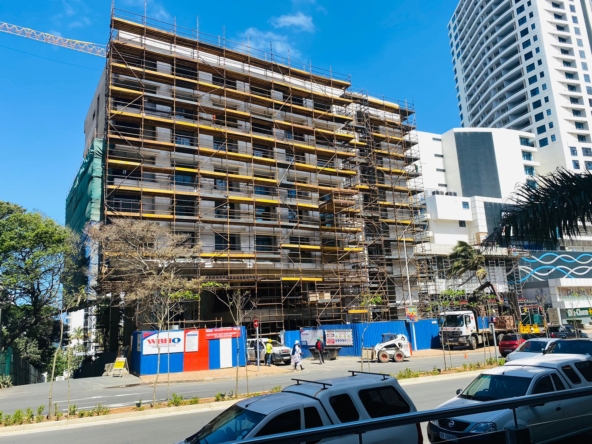Around 900 million people, mostly youth, are expected to move into African cities in the next few decades. But these cities don’t have the capacity to accommodate this kind of population growth. Philip du Toit from BPAS Architects explains how revitalizing old abandoned buildings could be the solution to this problem.
Many African cities pegged for a major population influx have old buildings with historical and cultural significance that have been neglected due to economic decline and changing demographics. Du Toit suggests that with innovative strategies, these forgotten spaces present a valuable opportunity for redevelopment. South African cities are full of existing buildings that have been repurposed, ranging from a burnt office tower being transformed into affordable housing units in Braamfontein, Johannesburg, to the addition of a new modern block on top of an existing, heritage-protected building on Kloof Street in Cape Town.
The radical development of the Zeitz MOCAA Museum in Cape Town is another excellent example, where an existing grain silo was transformed into a museum and hotel, becoming a work of art itself. Du Toit says that that we need to look at our cities with a fresh lens to find sustainable ways of addressing increased urbanisation. He champions the idea of looking at how we can use existing buildings and build on them in a three- dimensional environment to create new spaces. In his view, breathing new life into abandoned buildings can transform them into vibrant hubs of activity, fostering economic growth and community rejuvenation.
ADAPTING TO CURRENT NEEDS
There are various reasons why this is important. Firstly, empty pieces of land are becoming increasingly scarce, especially in cities. Secondly, the needs of those who use the buildings and people who live in urban areas change over time. For buildings to endure through multiple generations, they need to be adapted to suit changing social, economic and personal requirements. Thirdly, cities can’t keep on expanding horizontally; not only will this take up valuable natural areas, but it will also cause other problems. This is evident in things like traffic congestion along the N1 and N2 in Cape Town and pressure on service infrastructure for water, electricity, etc. that has to provide for ever-increasing volumes of new developments.
COST SAVING BENEFITS
Using existing buildings innovatively can also save costs, time and energy. The cost benefits are twofold – the physical elements of an existing building can be reused, and construction time can often be reduced. “Working with an existing structure saves a large part of the construction of any building. If the building refurbishment can be completed sooner than a new structure would take to build (depending on the level of conversion and the condition of the existing elements), the owner could start earning a return quicker,” says Du Toit.
PROCEED WITH CAUTION
However, he is cognizant that these types of buildings are not without their challenges. “Sometimes you can open up a can of worms with an existing building. The structure should be inspected properly to determine any age-related concerns. Some services might need replacement or to be moved, while existing physical parameters might prevent certain types of spatial qualities or functions. With very old buildings, the heritage legislation also needs to be taken into consideration.” An important factor for success when repurposing and revitalising old buildings is the mindset that developers adopt for these types of projects. They need to understand the broader benefits of repurposing existing structures. Having a team that works together from the outset to create a holistic solution is another important success factor. “Creative thinking is important. It is good to find a balance between what is required and what could be left as is.
Some regulatory bodies take the age of the building into consideration when applying the rules,” adds Du Toit. As an experienced Project Arichtect at BPAS Architects, his tips to make repurposing work successful are: take time to investigate the existing elements carefully, get expert opinions, plan carefully, and look at alternatives of what could work, taking not just the physical but also the social and contextual aspects into consideration.
Source: Everything Property




